If you’re a mushroom lover or simply curious about the nutritional properties of fungi—you may have wondered: is it safe to eat mushrooms raw?
Raw mushrooms have found their way into salads, sandwiches, and numerous raw food dishes. Their unique texture and earthy flavour can be an interesting addition to a variety of meals. However, before adding raw mushrooms to your plate, it's worth considering the potential downsides.
For many commonly consumed varieties of mushrooms like Button, Oyster, and Shiitake mushrooms, eating them raw is generally considered safe. Some people prefer them cooked for texture and taste.
With that said, some types of mushrooms should be avoided due to potential digestive issues, while others could pose serious, even life-threatening risks when consumed.
In this article, we will explore the science behind mushroom consumption, explaining why cooking mushrooms is generally better for you and if you wish to consume mushrooms raw, how to do so safely.
We'll also compare the differences between cooked and raw mushrooms, including safety considerations and nutrient availability, and provide a curated list of mushrooms that are safe to consume, those that are better avoided, and the ones you should steer clear of at all costs.
When it comes to boosting your immune system, nothing beats fresh fungi – and our mushroom growing kits make it easy to grow your own – take a look today.
- Is eating raw mushrooms safe?
- Can humans digest raw mushrooms?
- Why cooking mushrooms is best
- How to safely eat raw mushrooms
- Types of mushrooms that can be eaten raw
- Mushrooms to avoid eating raw
- How cooking mushrooms improves their flavour
- Mushroom cooking tips and techniques
- Frequently Asked Questions
- Final Thoughts & Takeaways
Is eating raw mushrooms safe?
For many popular types of mushrooms, consuming them raw is safe – if that is your preference. While most mushrooms available at supermarkets are safe to consume raw, doing so is not universally recommended. Texture and taste differences between raw and cooked mushrooms are also worth considering before adding them to your meals.
Can Humans Digest Raw Mushrooms?
Most people can eat raw mushrooms, but there are some considerations. Mushrooms have a tough cell structure, which can make certain nutrients less accessible when uncooked. Cooking helps break down these structures, potentially making some nutrients more available. While eating raw mushrooms isn’t necessarily harmful, some people prefer them cooked for texture and digestion.
| Nutritional Properties | - May retain more vitamin D if exposed to UV light. | - Cooking helps break down cell walls, making nutrients such as B vitamins, selenium, potassium, and phosphorus more accessible. |
| - Increased availability of beta-glucans, which contribute to maintaining normal blood cholesterol levels. |
| Flavour & Texture | Mild, earthy flavour with a crisp texture. | - Deep, umami flavour with a tender, meaty texture brought out by caramelisation of natural sugars. |
| Contamination & Digestibility | - Some varieties contain naturally occurring compounds, such as agaritine, which may be reduced by cooking. | - Cooking can help break down tough cell walls and reduce the presence of certain naturally occurring compounds. |
| - Possible bacterial contamination (can be reduced by washing or blanching). |
| Culinary Applications | - Suitable for salads, cold dishes, and recipes that call for a fresh, crunchy texture. | - Versatile for a variety of cooked dishes, stews, stir-fries, and more, where a hearty texture and rich flavour are desired. |
Why cooking mushrooms is best
Cooking mushrooms isn't just about taste or texture—it can also reduce the risk of bacterial contamination and make some nutrients more accessible. When dealing with wild-foraged or improperly stored mushrooms, cooking also significantly reduces the risk of bacterial contamination.
While there's a common notion that cooking may reduce the nutritional contents of many foods, mushrooms are generally an exception. Cooking mushrooms helps our bodies access essential vitamins and minerals, such as:
- B Vitamins (Riboflavin, Niacin) – Supports energy metabolism and mental performance as we age.
- Potassium – Lowers blood pressure and reduces the risk of stroke.
How To Safely Eat Raw Mushrooms
1. Ensure They Are An Edible Variety
The first step towards safely enjoying raw mushrooms begins with choosing the right varieties. Stick to those known for their edibility and palatability such as the common white button, cremini, and portobello mushrooms. Wild mushrooms, although intriguing, are a path best left untraveled unless you are a seasoned mycologist or have consulted with one. The wilderness hosts a plethora of mushroom species, many of which are highly toxic and easy to misidentify.
2. Purchase from Reliable Sources or Grow Your Own
Where you buy your mushrooms is equally important. Go for reputable grocers, farmers' markets, or speciality stores that are known for adhering to stringent food safety standards. If possible, gravitate towards organically grown mushrooms; this way, you may help reduce exposure to pesticide residues.
Alternatively, growing your own mushrooms is another way to ensure proper handling and standards, as well as making for a rewarding experience. It not only ensures a fresh supply but also provides control over the growing conditions.
Ready to grow your own? Our mushroom growing kits are made right here in the UK, so you get top-quality mushrooms grown safely and sustainably in your own home.
3. Proper Storage is Key
Once you've purchased or grown your mushrooms, proper storage is crucial to maintain their freshness. The refrigerator is your friend here. Storing them in a paper bag allows the mushrooms to breathe, which in turn helps maintain their texture and prolong their shelf life.
4. Thorough Cleaning
Before they make their way onto your plate, mushrooms need a thorough cleaning to rid them of any bacteria and dirt they may be harbouring. A rinse under cold running water usually does the trick. For a more thorough cleaning, a soft brush or cloth can be used to gently scrub away any stubborn dirt or debris.
5. Consider Blanching
For the purists amongst us, the idea of blanching may seem like a departure from the raw food ethos. Blanching can help reduce bacteria on the surface of mushrooms while maintaining their texture and flavour. A quick submersion in boiling water for 1-2 minutes followed by an immediate transfer to ice water to halt the cooking process is all it takes.
6. Become Aware of Allergies and Sensitivities
Some people with mould allergies or sensitivities may wish to introduce mushrooms gradually to assess their tolerance.
7. Consult a Health Professional
If you have a compromised immune system or other health conditions, a quick consultation with a healthcare professional before introducing raw mushrooms to your diet is advisable.
Types of Mushrooms That Can Be Eaten Raw
When it comes to raw mushroom consumption, not all mushrooms make the cut. Here are some varieties that are generally considered safe to eat uncooked:
White Button Mushrooms (Agaricus bisporus)
The humble white button mushroom is a common sight in grocery stores and is commonly eaten raw and widely used in salads and sandwiches.
Cremini Mushrooms (Agaricus bisporus)
Cremini, or baby bella mushrooms, are mature versions of white button mushrooms. Their firmer texture and richer flavour make them popular for eating raw.
Portobello Mushrooms (Agaricus bisporus)
The Portobello is the fully matured version of the Cremini, boasting a hearty texture and a rich, meaty flavour. They are excellent as meat substitutes in burgers or as a standalone dish with a drizzle of olive oil.
Shiitake Mushrooms (Lentinula edodes)
While Shiitake mushrooms are more commonly cooked to bring out their umami flavour, they can also be eaten raw. They have a chewy texture and a rich, smoky flavour.
With that said, there are some important considerations before you do. Like many mushrooms, raw Shiitake mushrooms have a firmer structure, which some people find preferable when cooked.
It's also important to note that some people may have sensitivities to raw Shiitake mushrooms, and they have been associated with a unique form of skin irritation known as Shiitake Dermatitis, which results in itchy and painful rashes.
Oyster Mushrooms (Pleurotus ostreatus)
Oyster mushrooms contain a protein called ostreolysin, which helps them break down wood in nature. Cooking neutralises this protein and improves the mushroom’s flavour.
As we continue to explore the world of fungi and understand what is safe in various quantities, the general consensus remains that cooking mushrooms is often the safest and most flavourful option. It's good practice to acquire them from reputable sources (or grow your own), handle them with care, and remain vigilant for any signs of spoilage to ensure safety.
Mushrooms to Avoid Eating Raw
While many mushrooms hold great medicinal and culinary value, some are simply not advisable to be consumed raw. Proper cooking or an alternative form of processing, such as oil extraction, is required for these varieties. Some mushrooms have a tough texture or natural compounds that make them less suitable for raw consumption. Therefore, when consuming mushrooms from an unfamiliar source, always ensure you can positively identify the species.
Reishi
Reishi mushrooms should not be consumed raw. These mushrooms are exceptionally tough due to their dense and compact skeletal hyphae structure, slow growth pattern, and the chitin-rich cell walls; attempting to bite into them could lead to dental problems - ouch! Reishi mushrooms are commonly dried, crushed, and used in teas, tinctures, or capsules.
Morels (Morchella spp.)
Morels, with their distinctive hollow stems and caps, are considered a delicacy. However, they must be treated with caution. Firstly, ensure you have genuine Morels (Morchella spp.) and not the false Morels (Gyromitra spp.). Secondly, they must be cooked before consumption. Morels contain chitin and other naturally occurring compounds, which some people may find easier to consume when cooked.
False Morels (Gyromitra spp.)
The false Morel, a lookalike of the mushroom mentioned above, is one to avoid, whether cooked or raw. False morels are known to contain naturally occurring compounds that can be toxic if consumed. Proper identification and cooking are essential, and they are generally not recommended for consumption.
Death Cap (Amanita Phalloides)
Amanita Phalloides, aptly known as the "Death Cap," should never be consumed in any form. These mushrooms contain such a high amount of lethal toxins that even a single mushroom can be fatal to several people. It's best to leave them where they belong - in the woods.
Chanterelles (Cantharellus cibarius)
Chanterelles are cherished in the culinary world for their unique flavour and aroma. While they aren't toxic like some other wild mushrooms, eating them raw could potentially cause mild gastrointestinal upset in some individuals.
In Eastern Europe, they are occasionally consumed raw or dried and powdered for their anti-parasitic properties. However, they can be confused with false chanterelles (Hygrophoropsis aurantiaca), so it's crucial to have strong identification skills. In any case, it's advisable to explore recipes that bring out their rich and nutty flavour.
Porcini (Boletus edulis)
While many mushrooms in the Boletus family are edible, Porcini are best enjoyed when cooked. Although they lack lethal toxins, they may be somewhat challenging to digest and can cause gastrointestinal discomfort if consumed raw. Proper preparation through cooking breaks down any potentially indigestible elements, resulting in a more enjoyable culinary experience.
Honey Mushrooms (Armillaria mellea)
Honey mushrooms require thorough cooking to break down their mild toxins and to eliminate any harmful bacteria, making them unsafe for raw consumption.
In a world teeming with edible, palatable, and even lethal mushroom species, it's often not worth the risk of experimenting with those that come with "may be edible if" attached to them. Even the most seasoned foragers tend to stick to the mushroom varieties they know well. The potential for unpleasant effects isn't worth the risk. After all, no one wants liver failure for the sake of a meal, do they?
How cooking mushrooms improves their flavour
Cooking not only makes mushrooms safer and more nutritious but also significantly enhances their flavour and texture. This transformation occurs through several key processes:
- Maillard Reaction: When mushrooms are exposed to heat, they undergo the Maillard reaction – a chemical process between amino acids and reducing sugars – that produces new flavour compounds. The Maillard reaction not only gives the mushrooms a richer, more savoury taste but also changes their colour to a delightful golden brown.
- Water Evaporation: Mushrooms consist of about 90% water. Cooking helps evaporate some of this water, which concentrates the flavour of the mushroom. The reduction in water content also changes the texture, making them more tender and meat-like.
- Fat Absorption: When cooked with fats like butter or olive oil, mushrooms absorb these fats, which serve as carriers for soluble flavour compounds. This enables the mushrooms to develop a more robust and rounded flavour.
- Caramelisation of Natural Sugars: Mushrooms contain natural sugars that caramelise when exposed to heat. This caramelisation process adds sweetness and complexity to the mushroom’s overall flavour profile, making them more appealing.
Mushroom Cooking Tips and Techniques
For additional insights into the benefits of cooking mushrooms, we consulted Chris Bax, an expert forager and chef from Taste the Wild. Chris reiterated the point that button mushrooms, on their own, can be "a bit sad." However, with proper cooking techniques and browning, they acquire a caramelised texture that accentuates the umami flavours.
Selecting the right cooking technique is essential and varies depending on the type of mushroom. For fleshier varieties like Oyster or Button mushrooms, Chris recommends cooking them quickly at high heat to prevent water from oozing into the pan, which can result in a soggy texture. Overcrowding the pan should be avoided as it reduces the temperature, leading to sogginess.
Adding salt towards the end of the cooking process can provide a crispier texture by absorbing any residual moisture and creating a delicious crunchy edge. In general, methods like grilling, sautéing, or baking are popular for maintaining flavour and texture compared to boiling.
Cooking mushrooms can extend beyond frying; they can be incorporated into a wide array of recipes, such as soups, sauces, or stir-fries. When comparing fresh and cooked mushrooms, the latter often offers a longer shelf life. Storing them in the fridge or freezer is a viable option if you're running short on time and wish to prevent your fresh mushrooms from spoiling too quickly.
Frequently Asked Questions
Can Raw Mushrooms Cause Food Poisoning?
Raw mushrooms may contain potential parasites, bacteria, and viruses, and subjecting them to heat processing significantly reduces this substantial risk. Mushrooms purchased from the store are a safer option than wild species, offering fewer chances of toxic surprises and future health issues.
Is It Safe to Include Raw Mushrooms in Salads?
Mushrooms make a wonderful addition to numerous dishes, salads being no exception! While certain types are most suitable for salads when they're cooked, there are varieties that can be enjoyed raw. Some mushrooms, like Button mushrooms, are commonly eaten raw, but it's always best to follow food safety guidelines. Whether you're growing the mushrooms yourself or obtaining them from a reputable supplier, it's vital to ensure they follow all safety regulations. The last thing you want is harmful bacteria or pesticides on your mushrooms. To prepare them, begin by washing them thoroughly to eliminate any soil or residue. Even simple handling and processing can introduce low levels of contamination.
Can You Eat Raw Mushrooms Whilst Pregnant?
If you are pregnant, your focus is likely on the best nutrition for both yourself and the baby. Raw mushrooms may contain bacteria such as Listeria, which is why pregnant individuals may prefer to consume them cooked. If unsure, consult a healthcare professional.
Can Babies Eat Raw Mushrooms?
Due to the ongoing development of their digestive system, it's advisable to exclude mushrooms from a baby's diet. Young children have developing digestive systems, and some parents choose to introduce mushrooms gradually and in cooked form.
When you do introduce mushrooms, ensure they are thoroughly cooked and gradually integrated into the diet to allow the gut bacteria to adjust at their own pace. Even in Eastern Europe, where wild mushrooms are consumed in significant quantities, it's common to avoid serving them to children until they are at least 12 years old (although with cultivated varieties like Button mushrooms, this introduction can occur a bit earlier).
How Long Can You Keep Raw Mushrooms in the Fridge?
Raw mushrooms can be stored in the fridge for approximately 7 days. However, it's essential to note that they lose moisture and may become wrinkly as each day passes. Storing them in a plastic bag is not recommended, as it can cause them to sweat and spoil more quickly. Opt for a paper bag if you can't prepare them immediately
Final Thoughts & Takeaways
It's apparent that the world of mushrooms offers a fascinating blend of culinary delight, nutritional benefits, and medical potential. While there are thousands of species yet to be fully explored for their effects on health and athletic performance, it's crucial to proceed with an informed approach.
- Stick to Safe Varieties: Eat only well-known, safe-to-consume mushroom species, especially if you're new to mushroom foraging or consumption.
- Preparation Matters: The way you prepare mushrooms can impact not only their taste but also their nutritional and safety profiles. Cooking can change the texture and flavour of mushrooms and may make certain nutrients like Vitamin B and potassium more accessible.
- Source Mushrooms Responsibly: Whether you're foraging in the wild or purchasing from a shop, ensure that your mushrooms come from reputable sources for quality and freshness.
- Be Mindful of Vulnerable People: Pregnant women, babies, and individuals with specific health conditions should consult healthcare professionals before including mushrooms in their diet.
Curious about growing your own mushrooms at home? We’ve got you covered. Our mushroom growing kits make it super easy, whether you’re after tasty oyster mushrooms, flavourful shiitakes, or the impressive lion’s mane. Each kit is beginner-friendly, with everything you need to get started. Ready to give it a go? Explore our full range and bring fresh, homegrown mushrooms right to your kitchen.
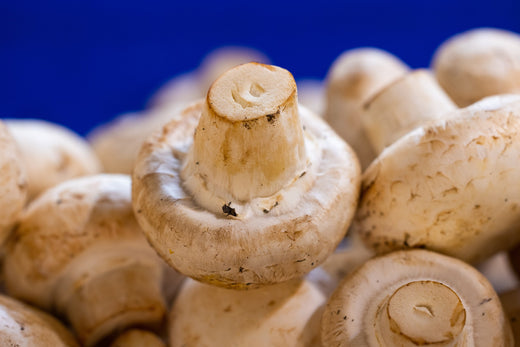
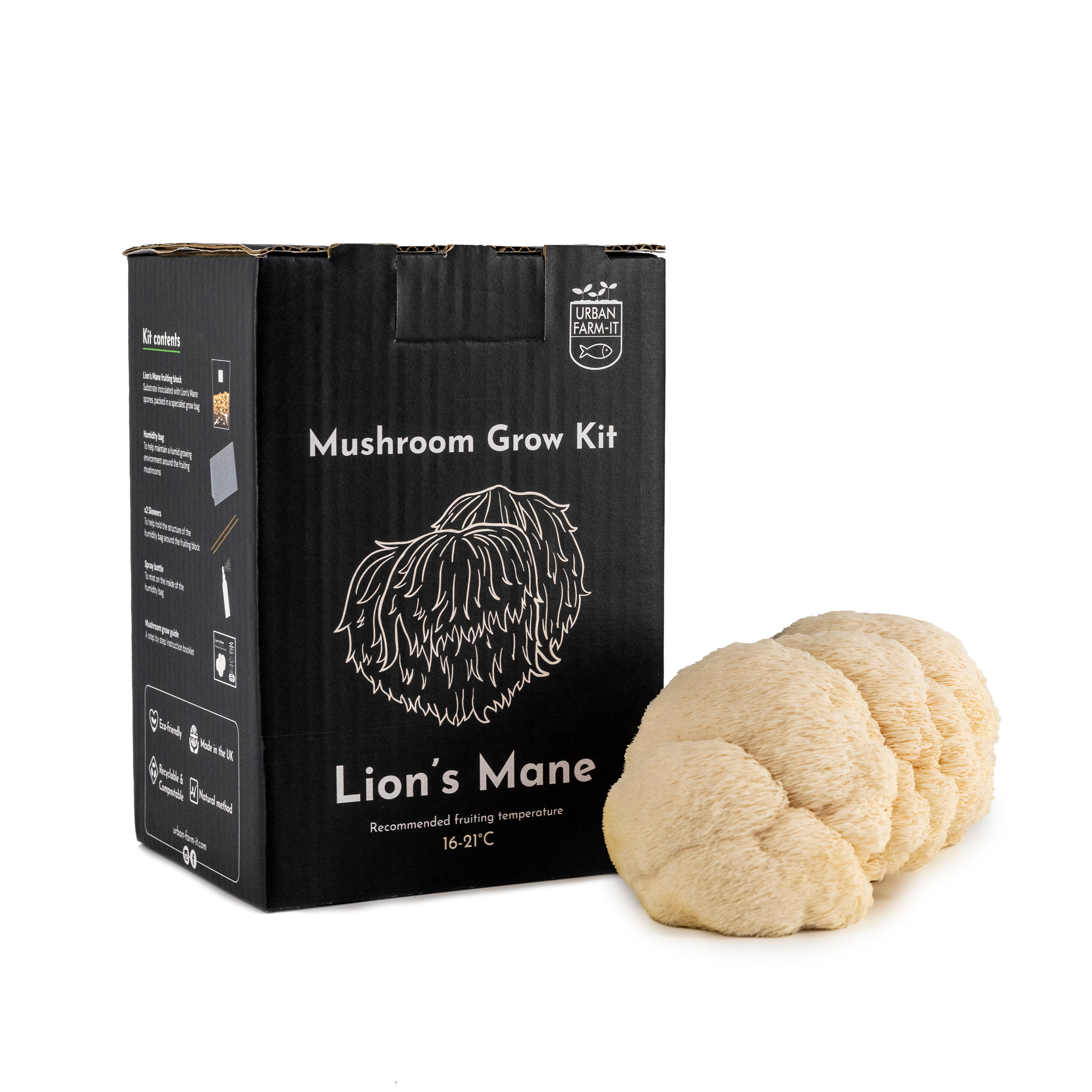
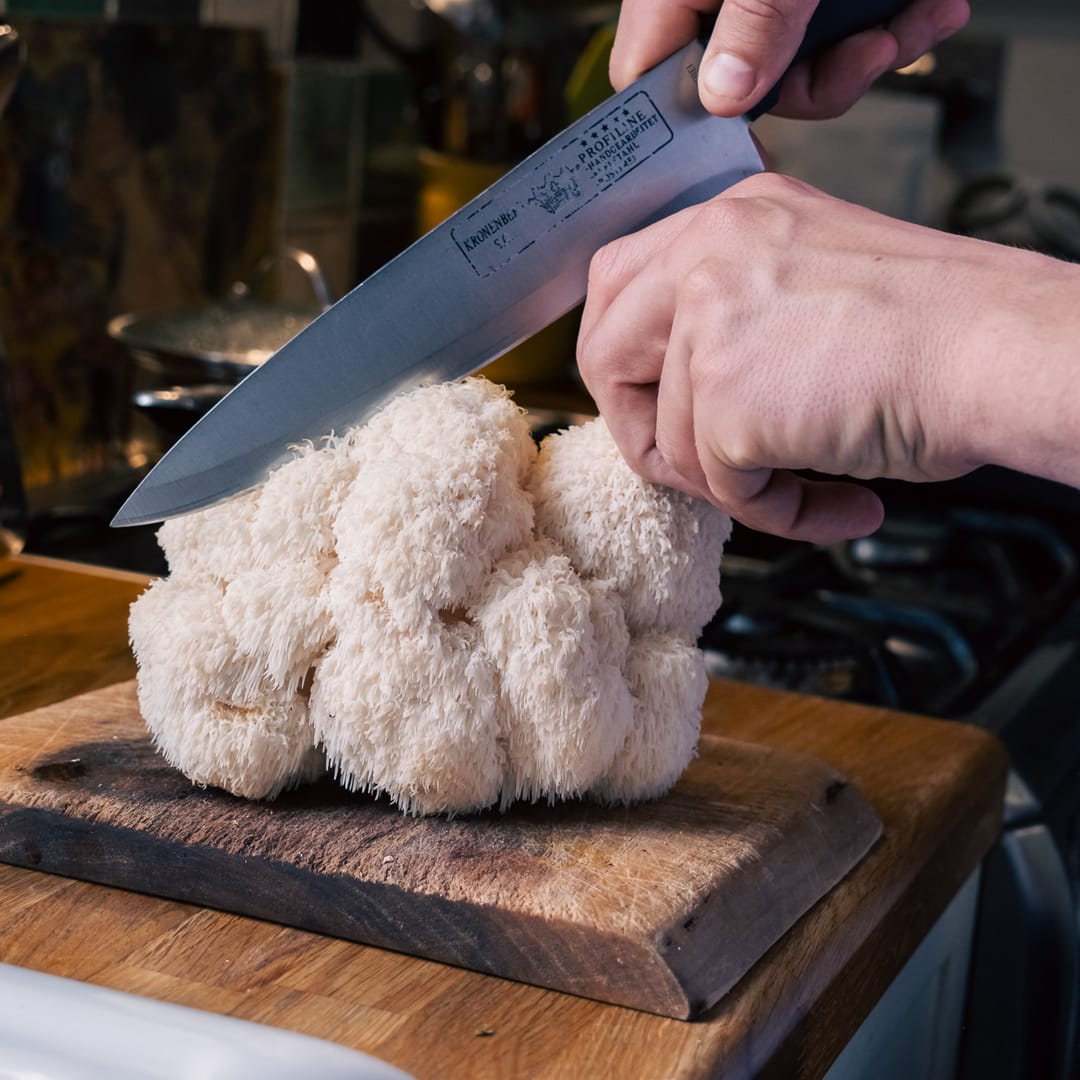

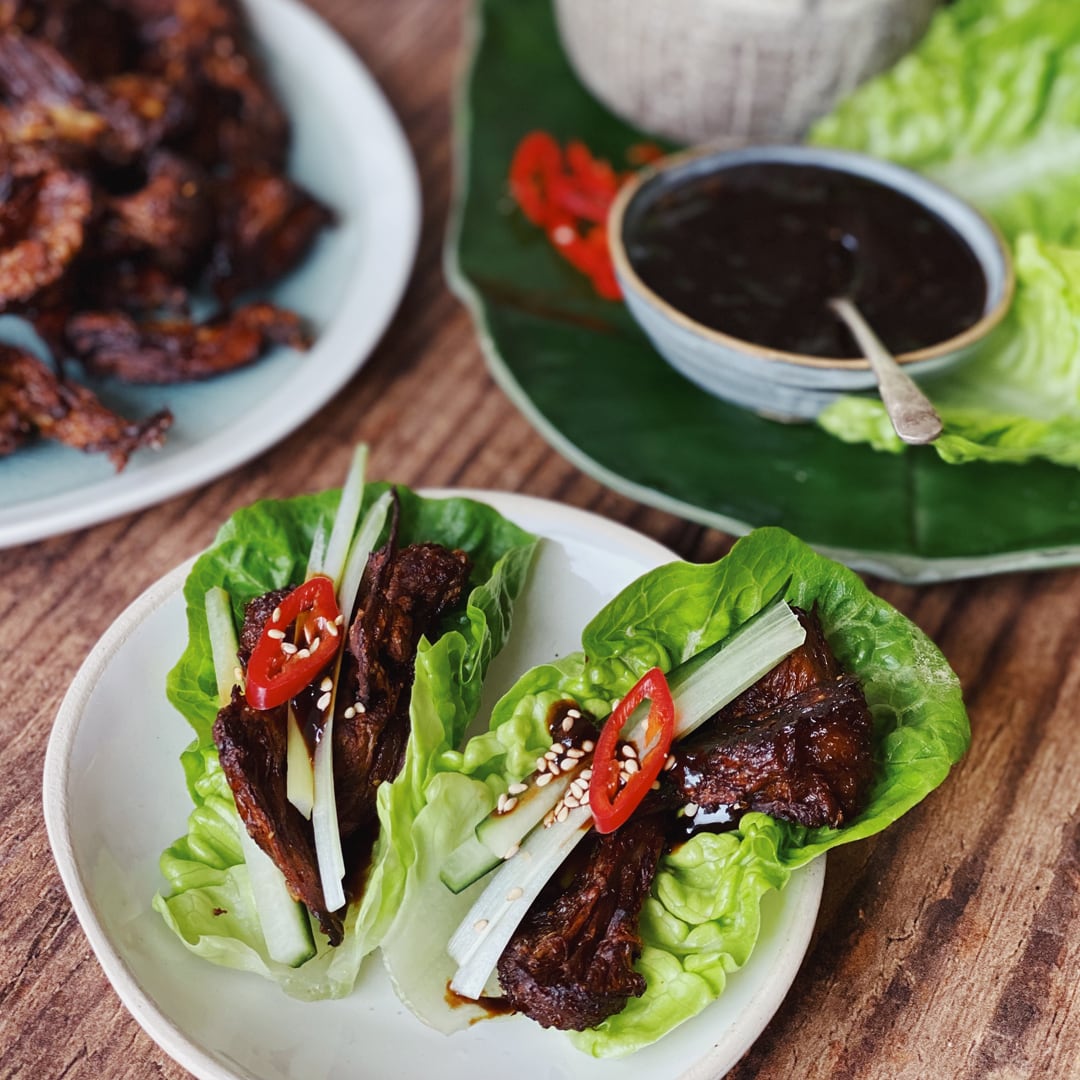
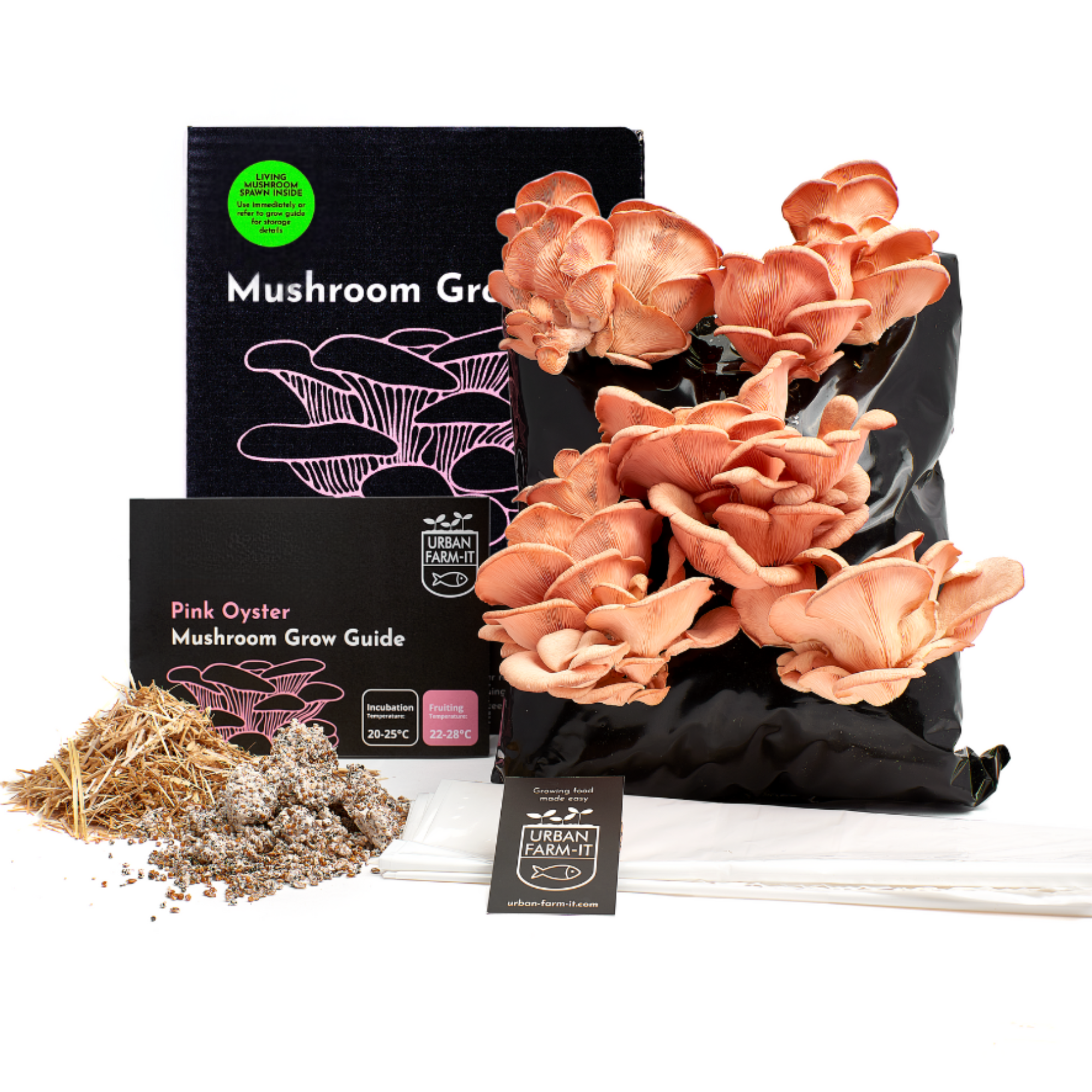
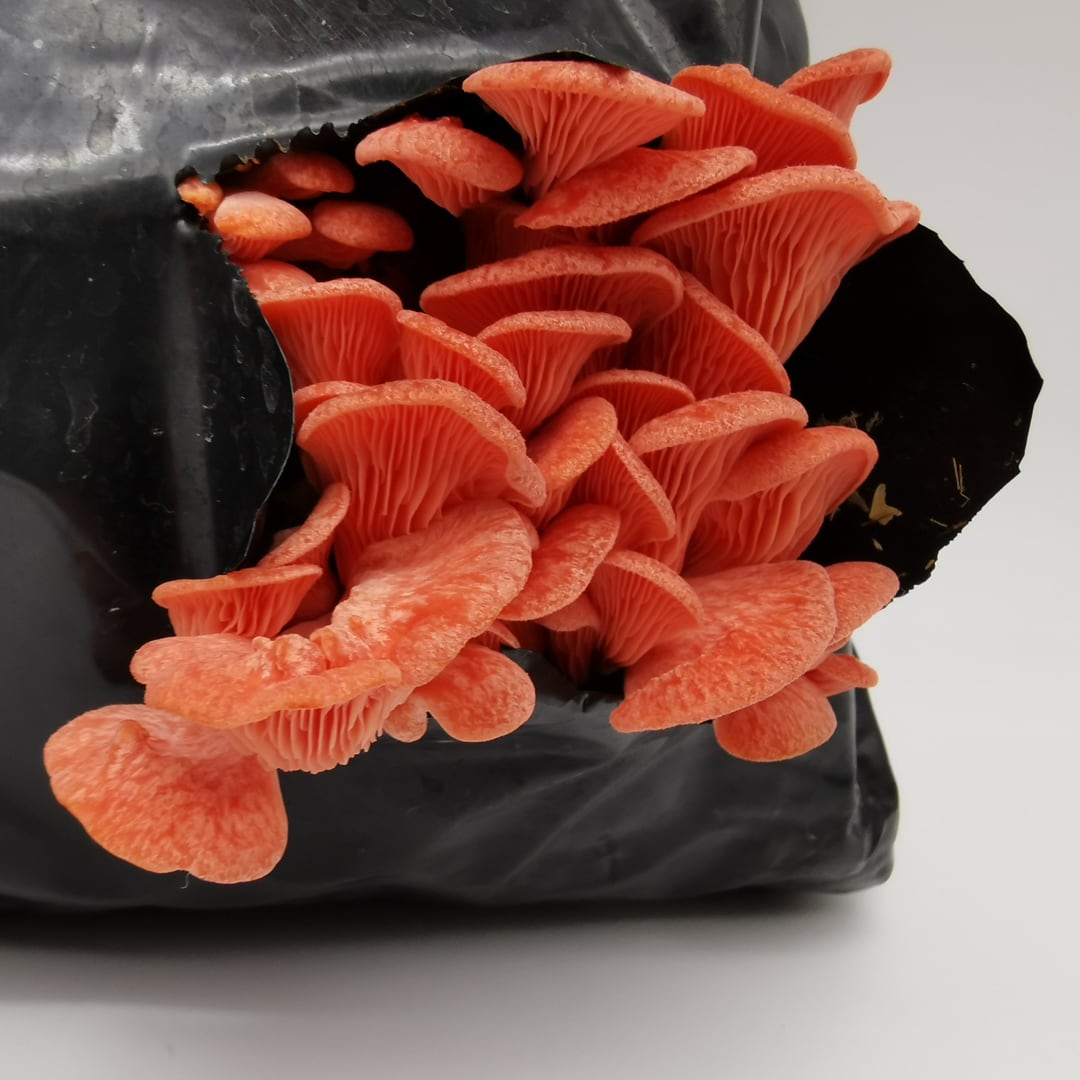
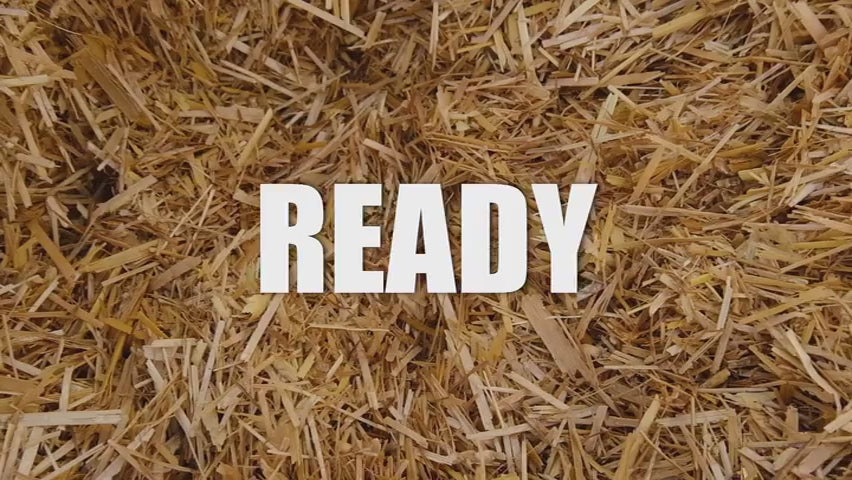
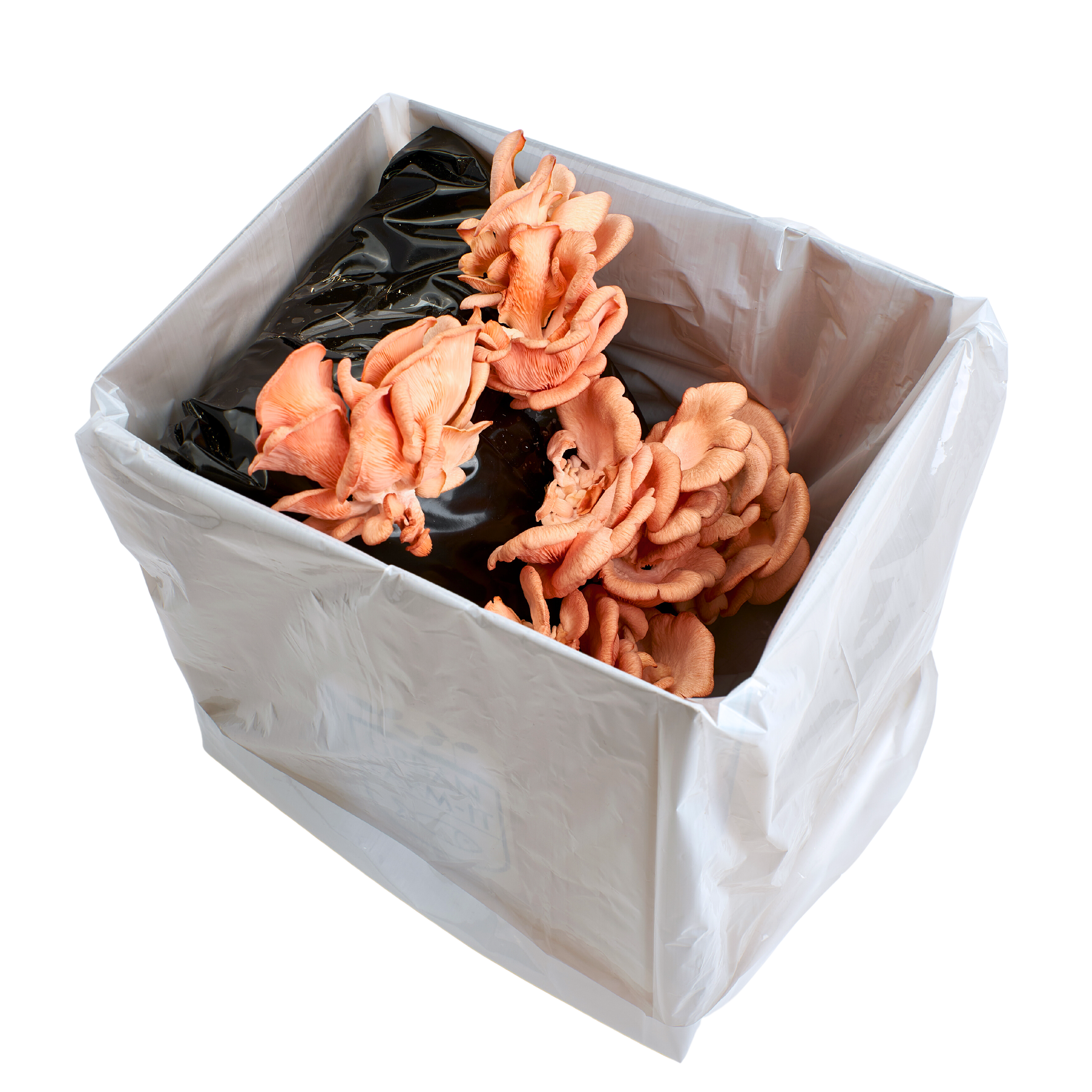
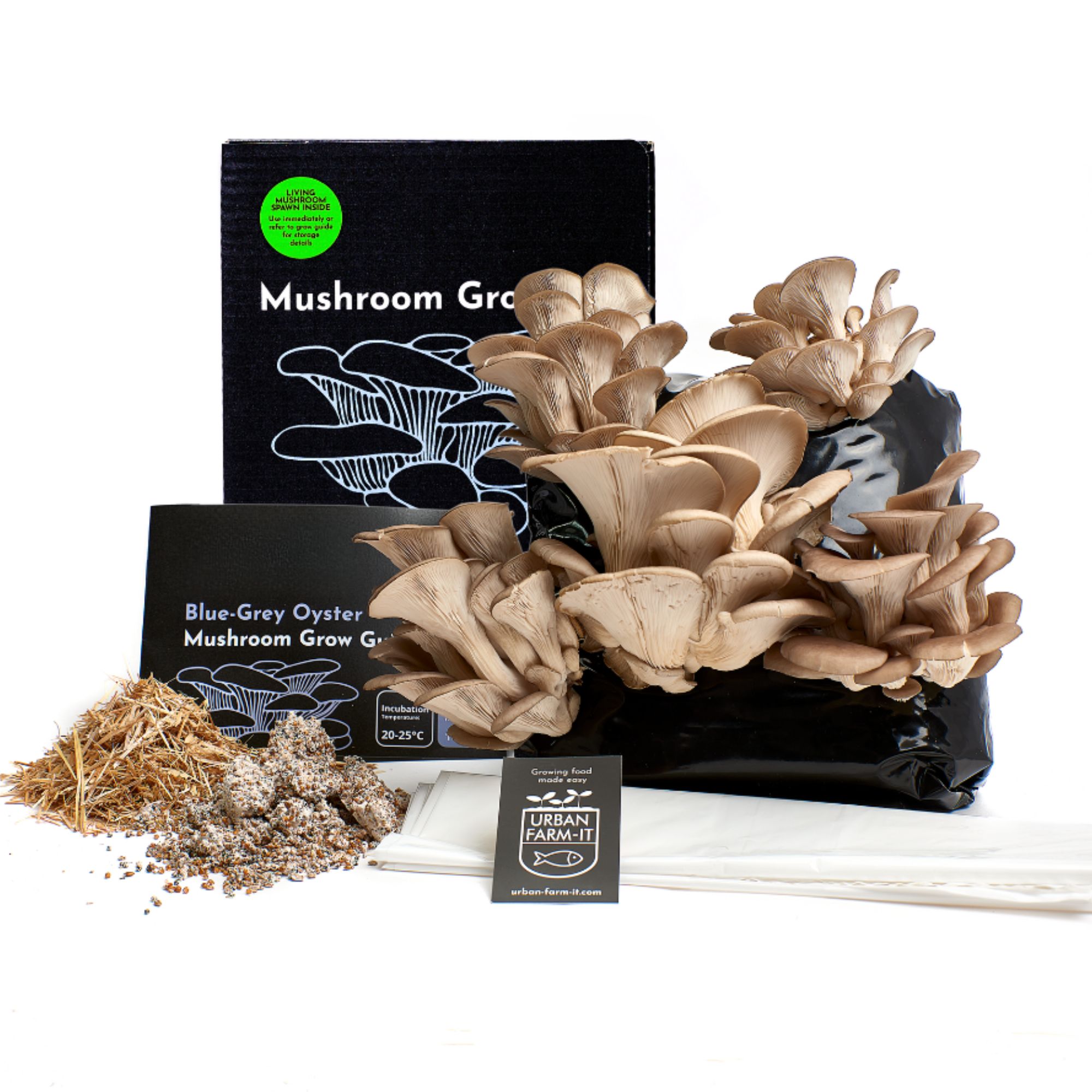
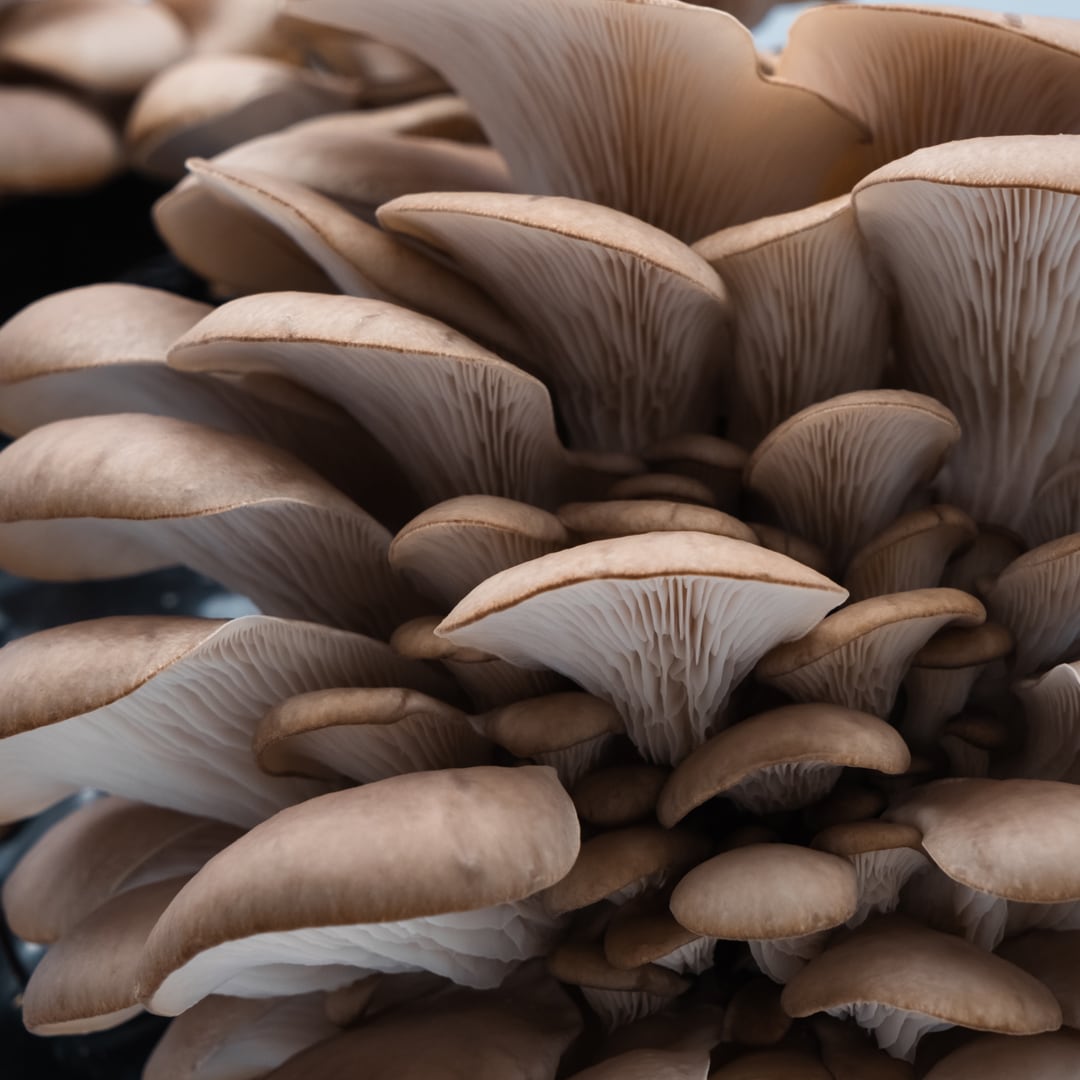
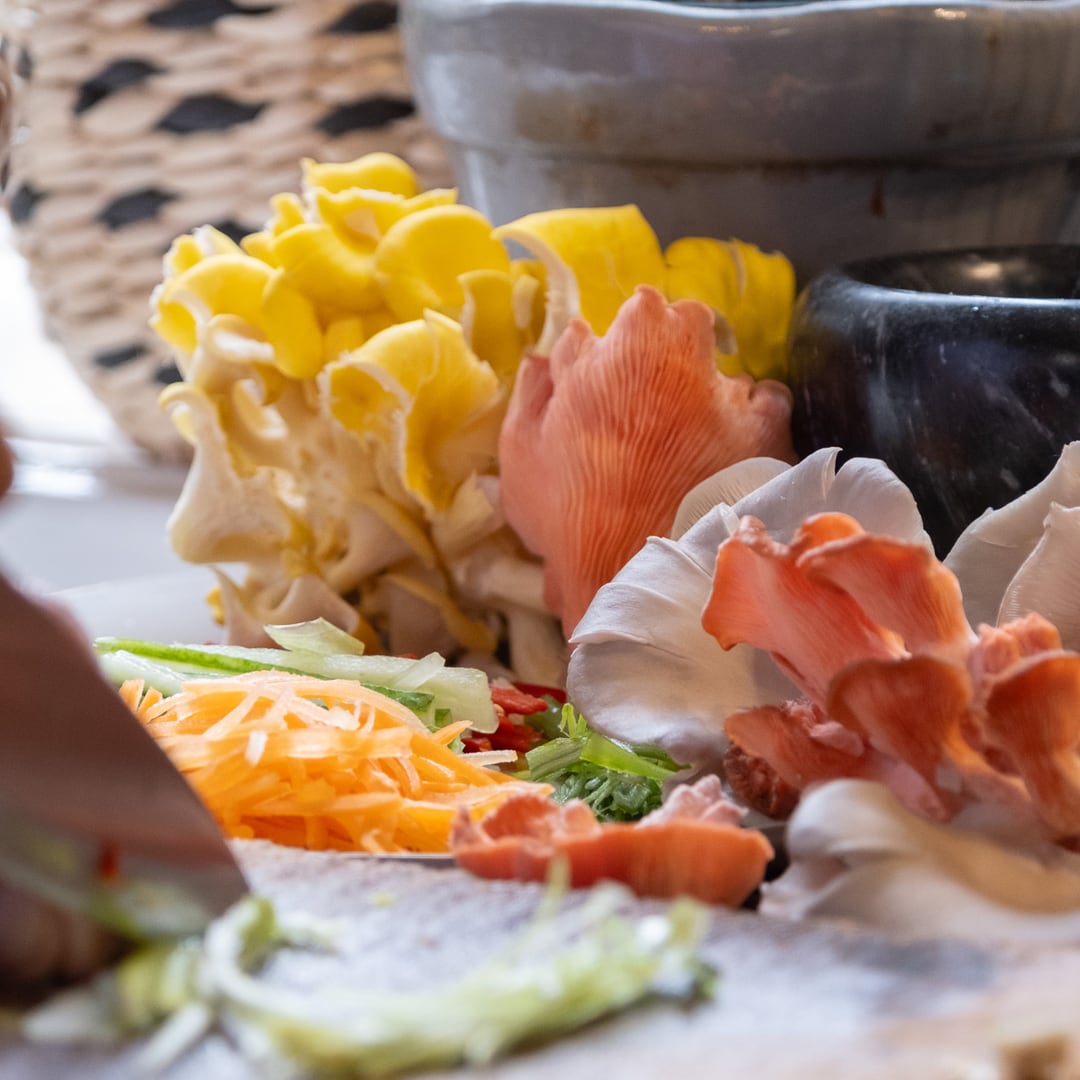
Share:
5 reasons you should take lion’s mane mushrooms
Lion's Mane Mushrooms: Nutrition, Benefits & How to Use Them